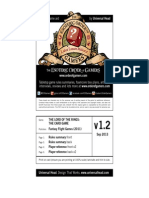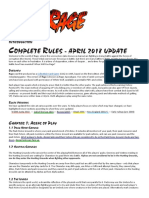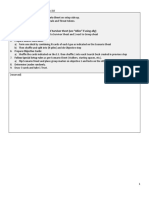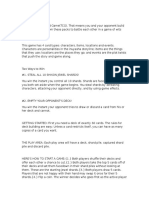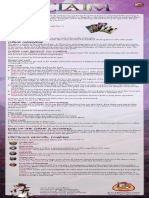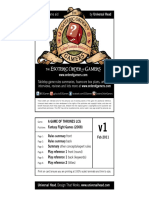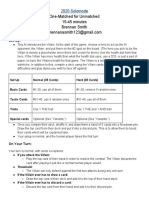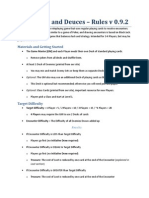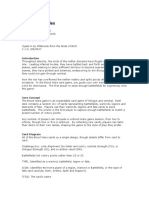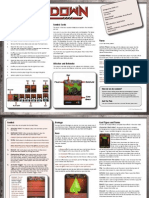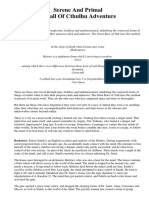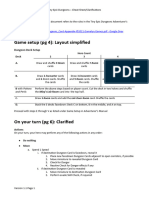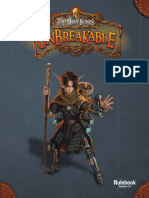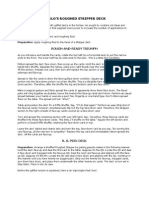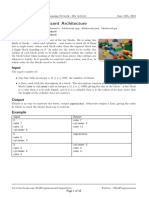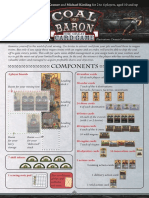0) Start of Round
Freeform tormenting or releasing of hostages. Dead characters can't be tormented, but they can be released.
-Releasing: Released cards go to the owner’s hand and the player who releases, draws a card. Cards released via
card effects/leader abilities does not confer this benefit.
-Tormenting: Tormented cards goes to the owner’s discard. The result is based on card type:
o Hostility/Truce: Tormenter makes them move a power from any of their characters to the leader.
o Leader Character: Remove 4 power from their leader out of the game.
o Non-Leader Character: Remove 4 power from the character to the leader. If 0 power, death.
1) Preparation
-Challenger determines defender.
-Each active player draws a card from their deck.
-Each active player moves 1 power from their leader to a character.
-Challenger chooses a character to participate. Then, the defender chooses a character to participate.
2) Support
-Clockwise from the challenger, non-active players may offer support to the defender or challenger with one of their
characters. Support is accepted or rejected at the time of offering.
3) Encounter
-Select cards.
-Determine results based on these three possibilities:
• Hostility: Add participating power + hostility card value. Compare values. Characters count as a Hostility 0.
Winners receive rewards and losers receive penalties. Ties are penalties for all participants.
• Truce: Exchange of one or more of the following, max of once/player:
o Spread influence. Max once/player.
o Taking up to 2 hostages. Max once/player.
o Move 3 power from leader to opposing leader. Max once/player.
o Taking an opponent’s ally. Player’s can show each other their allies, if they want^.
***No exchange means penalties for all participating players***
• Betrayal: Hostile player receives rewards. Loser suffers penalties. The active player on the losing side receives 1
hostage from each winner when they receive rewards in the Resolution phase.
Hostages come from choice of:
• A card from the top of that player’s house deck.
• A card randomly chosen from that player’s hand of cards.
• A hostage belonging to that player. If it's a hostage from your house, return it to your hand.
4) Resolution
• Challenger Rewards: Spread influence. Active player, additionally, takes a hostage if it was a hostility.
• Defender Rewards: Draw 2 cards and move 2 power from the leader to any character(s). Active player takes a
hostage.
• Alternative Rewards: Instead of taking challenger or defender rewards, a player may draw an ally card^.
• Penalties: Move half of the power (round up) from your character to your leader
5) End of turn - Anyone with less than five cards, draws up to five.
�Game End
-A single house has spread all its influence or has all their characters killed.
Finer Points
Character Cards
-Character cards can be used when that player’s character is participating.
-Leader cards for a player can be used when that player has a character participating.
-When using a character card as a Hostility 0, any character may be chosen.
-Killed character cards can't be used for their text effect, but can be played as a Hostility 0.
Timing Conflicts
-Leader abilities resolve before other text effects. Otherwise, clockwise from the leader. If they can't be resolved this
way, the challenger chooses the resolution order.
Other
-Leader abilities are optional.
-Reshuffle after deck depletion.
-If a player is protected from penalties, hostages can't be taken from them.
-If a player has no cards but needs one for an encounter, play the top card of deck facedown (the owner may look at it).
-Participating players who control characters who die during an encounter are still involved (can receive rewards and
penalties).
^Allies (Expansion)
-As the last step in set-up, each player begins the game with one ally, if you’re playing with allies.
-Allies are not considered to be part of a player’s hand of cards (even if the player chooses to add them to their hand
instead of having them face-down in their player area as instructed by the rules). Therefore, the can’t be taken as
hostages.
-Discard ally cards after they have been used.
-There is no limit to the number of allies any player may play during a turn.
-When the last ally card is drawn from the ally deck, shuffle the ally discard pile to become a new ally deck.
-A player can have multiple participating characters, due to an ally cards. If a player, then uses an ability/card that
affects the player with multiple participating characters, the user of the ability/card chooses which character among the
multiple participating characters is being affected by said ability/card.
Deck composition:
11 Hostility: 1-8, 10, 12, and 20
10 Characters: 2/type
04 Truces





